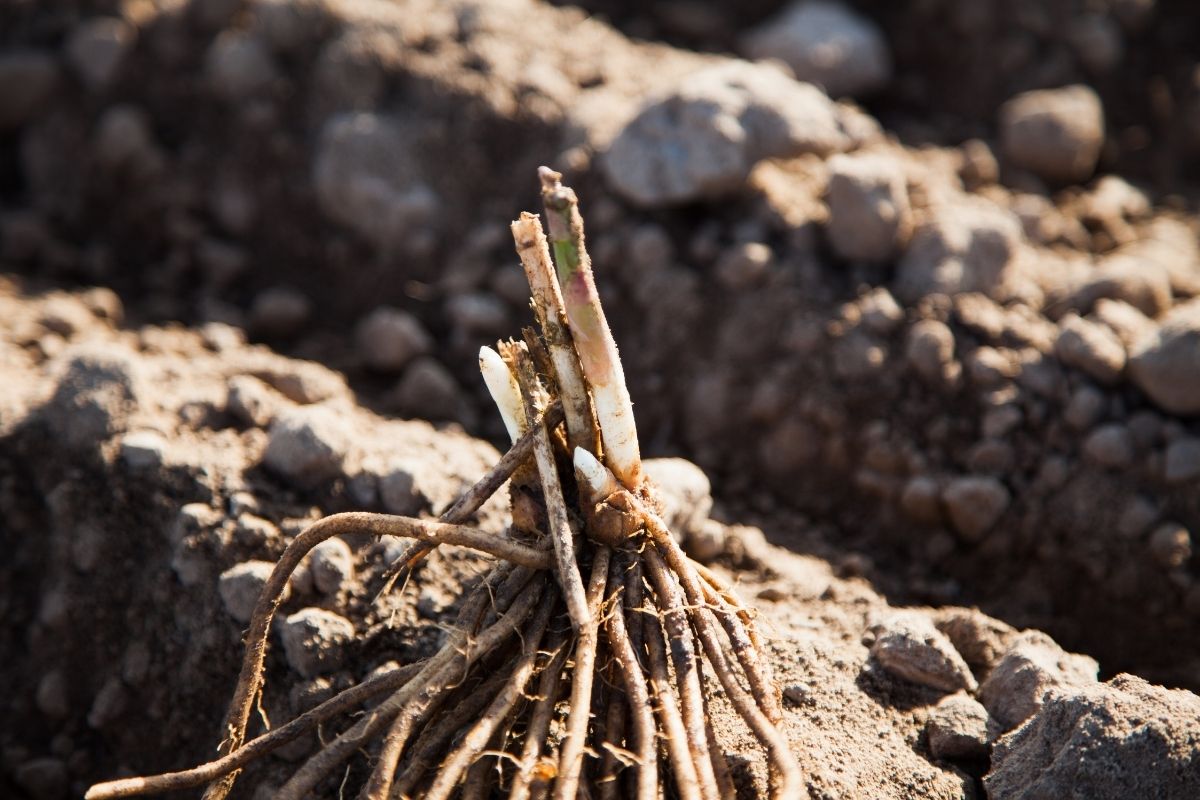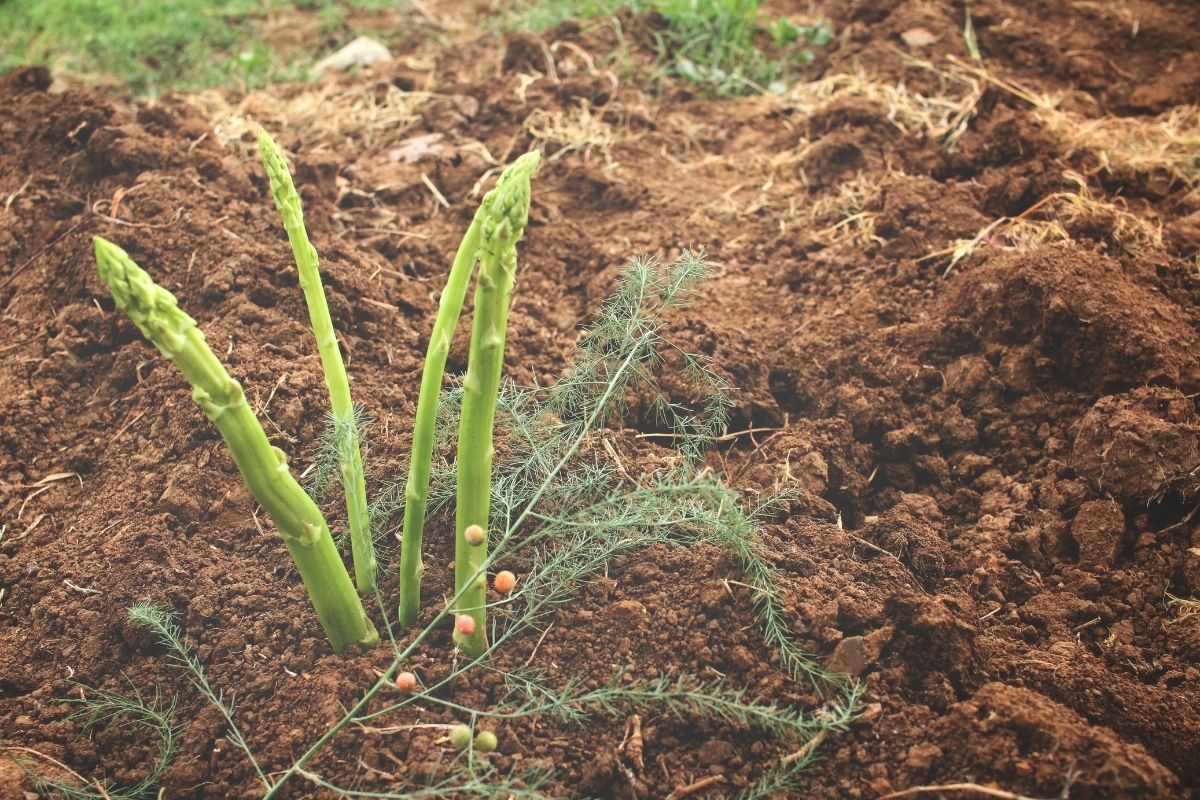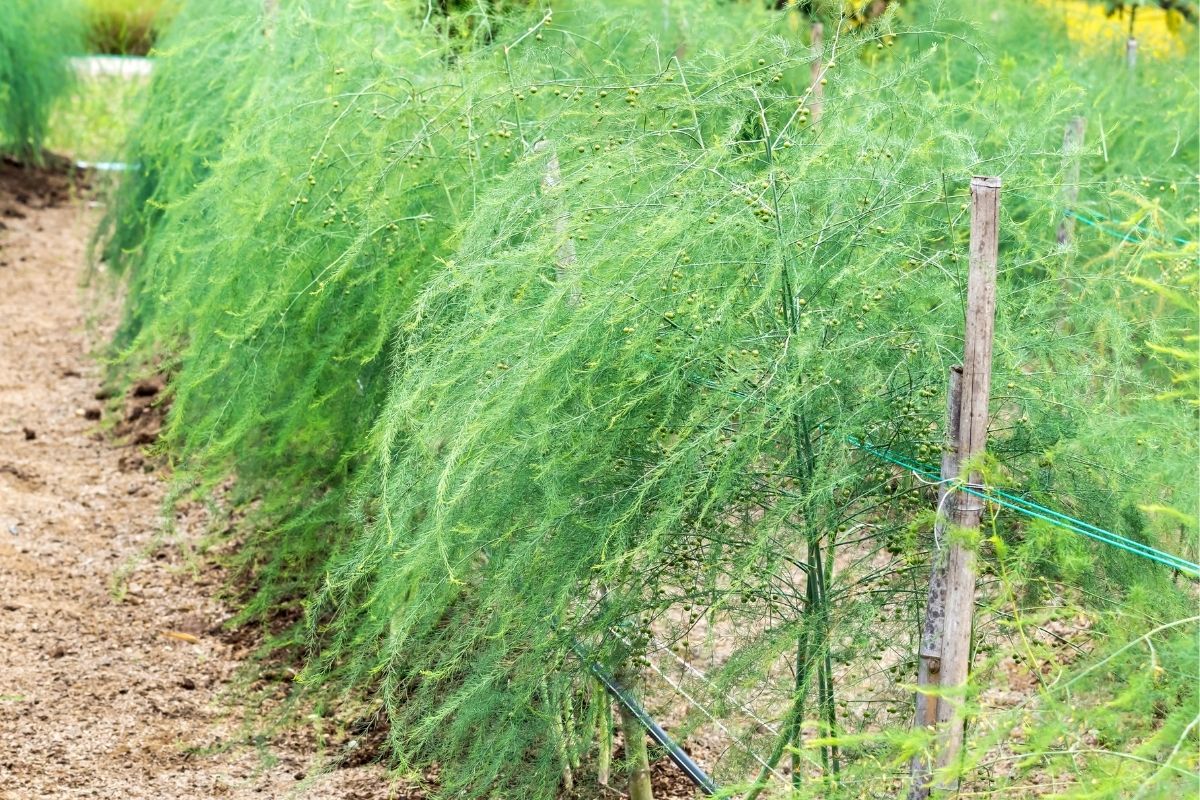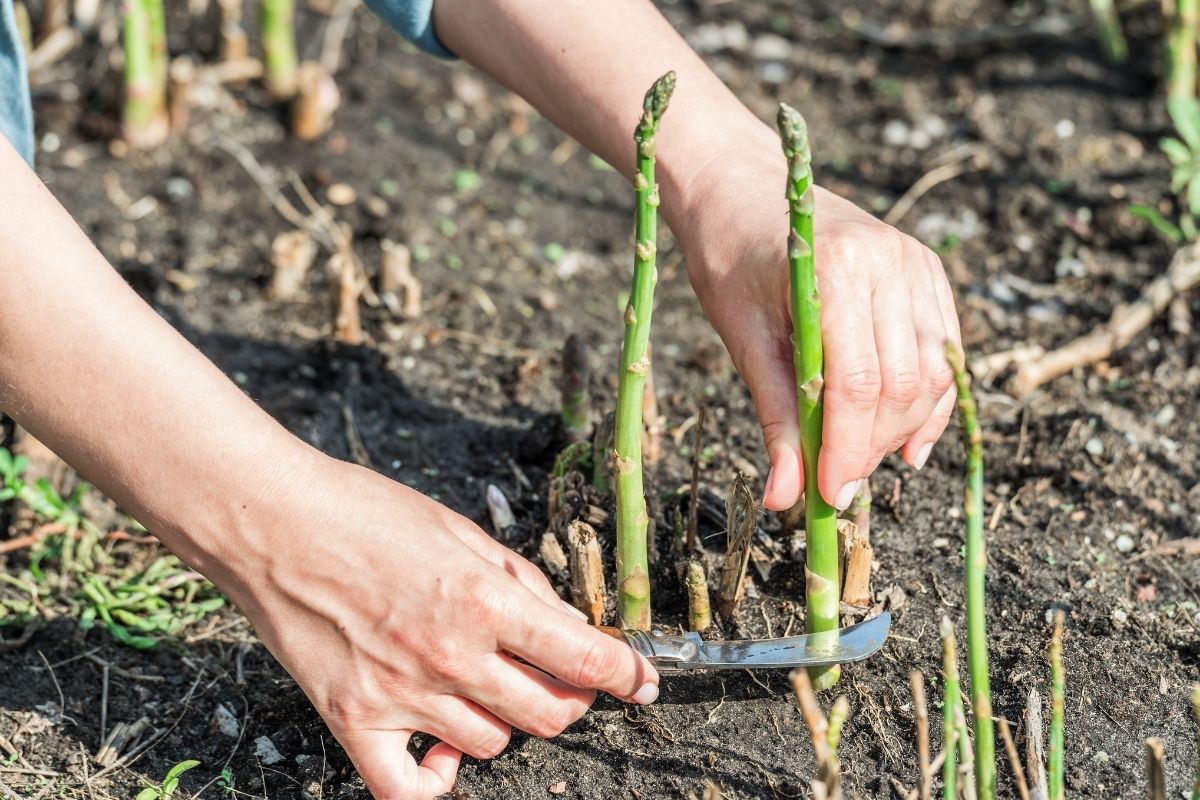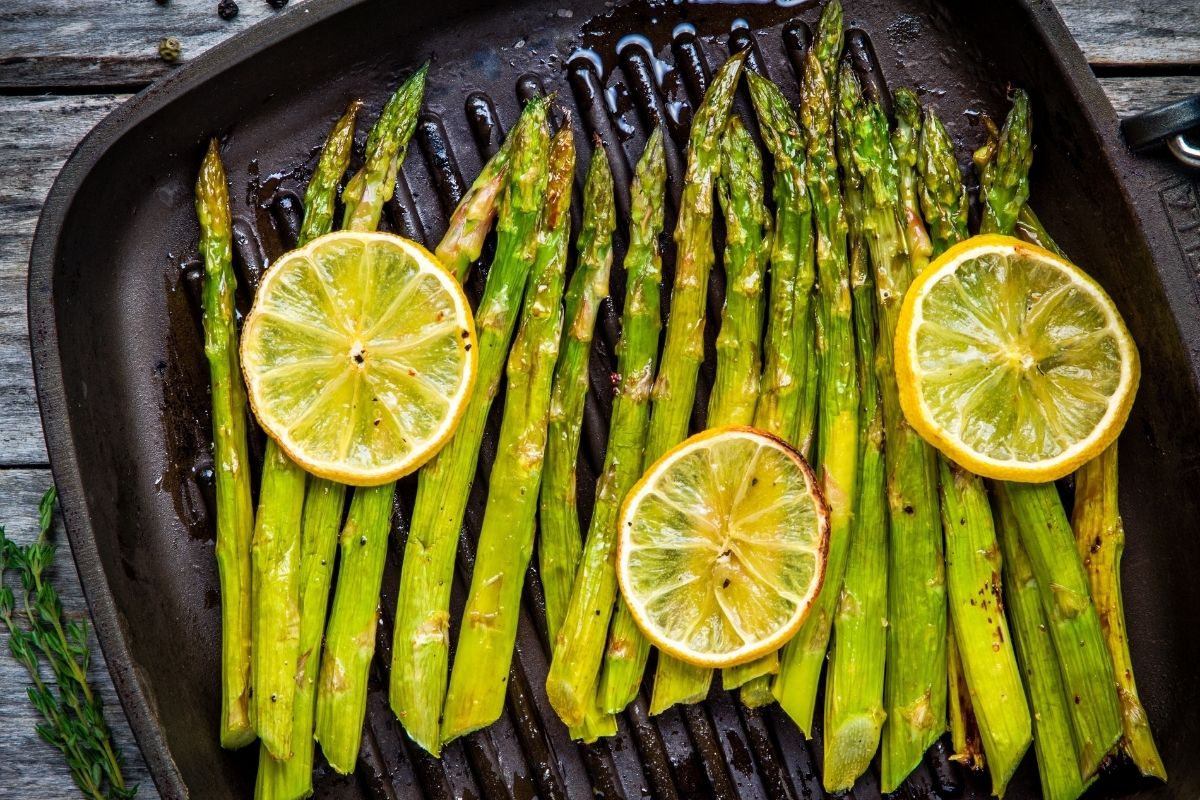Of all the veggies you can grow yourself, asparagus probably benefits the most from the short distance between soil and table. The unique sweetness of the juicy spears starts to deteriorate immediately after harvest, turning them progressively starchier, woodier, and less tasty.
Growing your own asparagus lets you experience this luxurious vegetable in peak condition, within minutes of harvest. Asparagus crowns get your plants off to a good start so you can enjoy delicious spears for years to come.
Why Choose Asparagus Crowns?
Asparagus crowns are the roots and rhizomes of year-old plants, carefully dug up and sold soil-free and ready to plant. Although asparagus can be successfully grown from seed, the head start given by planting crowns means you can enjoy harvests a year or two earlier. Crowns are also a little sturdier than seedlings, and will establish in your veggie patch more easily, taking most of the difficulty out of growing this sometimes temperamental vegetable.
Choose Your Location Wisely
Asparagus plants can live for 20 years or more but they hate to be transplanted, so you need to pick a permanent location in the garden where they can grow undisturbed. It should be a sunny spot with deep, rich, free-draining soil to give the extensive root system plenty of space to develop. If your soil is a heavy type, raising the bed height with around 30cm of lighter compost will help the crowns settle in.
Asparagus also needs plenty of space to spread and multiply as it grows, so when choosing your bed allow at least 40cm spacing per plant in each direction.
Planting the Crowns
Asparagus crowns will greatly appreciate plenty of compost or well-rotted cow manure dug into their beds before planting. If available, spent mushroom compost makes an excellent choice as its natural pH is a good fit for asparagus, but any rich organic material will help. Also, fully clear the beds of weeds before planting the crowns. Weed control is a long-lasting necessity for asparagus, so give the plants the least possible competition from the start.
Asparagus crowns should be planted in late winter or early spring. For each crown, dig a hole to a depth of 30cm, with a raised mound in the centre. The mound should be high enough so that when the crown is placed on it the top will lie just under the soil's surface.
Place each crown on its mound and spread the roots out evenly so that the final result resembles a soil-dwelling octopus. Refill the hole, ensuring the centre of the crown is either just below the surface or barely peeking through, and water well.
Optionally, adding a mulch of dried grass clippings or light compost will help retain moisture in the soil, suppress weeds, and also give some protection against any unexpected late frosts.
Harvesting Asparagus
Homegrown asparagus is a veggie that repays patience. In the first year it will sprout a small number of stems, but it's vital not to harvest these, no matter how tempting. In its first growing season the crown needs to put all its energy into establishing a strong root system. Let the stems grow into fern-like foliage up to 150cm high, and once it's turned yellow at the end of the season, cut it back to ground level and cover the bed with a light mulch of rotted compost. If the foliage becomes unruly, support it with a trellis or stakes during the growing season.
The next year, you can start to harvest around half of the spears from when they appear in spring, leaving the remainder to grow into full foliage. Cut the tender spears just below ground level using a sharp knife. For each subsequent year, harvest up to 80% of the spears, always leaving the rest to grow and sustain the plant for the next growing season. It's traditional to stop harvesting altogether by the longest day.
However many spears your plants produce, only harvest the youngest and most tender ones to enjoy them at their very best, as they grow progressively woodier and less sweet with age.
Ongoing Care
With the right care and attention, an asparagus plant can deliver harvests for up to two decades. The most important points are to keep the beds well watered throughout the warmer months, even when the tips aren't showing through, and also to be aggressively conscientious about weed control to ensure your asparagus isn't hampered by competition.
At the end of each growing season, cut the yellowing foliage back down to the ground and top-dress the bed with compost to replenish fertility and protect the roots against colder weather.
Freshly harvested asparagus is a true luxury that's not easily available on most supermarket shelves. Grow your own and you’ll be rewarded with the best produce you could hope to enjoy for many years to come.
Browse asparagus seeds and crowns.
